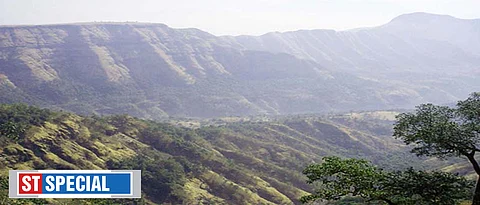

PUNE: A retired professor from The Centre for Ecological Sciences (CES) at Indian Institute of Sciences (IISc) K Sankara Rao and his team found that due to human interference, most of the floral species in the Western Ghats have become endangered. He made this observation while digitising the floral species from the peninsular region of the country.
Rao told Sakal Times that the digitisation was being conducted since collections of herbarium (collection of preserved plant specimens) were over 30 years old and there could be a lot of changes in species diversity in a habitat.
“The aim of carrying out these extensive ecological surveys is to ensure that the information provided on the journals or by media is accurate and up-to-date. The digitisation exercise has been carried out at north and south areas of Karnataka, south of Aravalli and we are moving ahead with Western and Eastern Ghats,” he said, adding, “While carrying out this activity, we found that mainly due to human interference, including tourism and accommodation, the species of flora in the Western Ghats have become endangered. But it is too early to determine the exact types of species that have been endangered. This data will help scientists determine the reason for them having become endangered.” Rao and his volunteers started digitising and compiling records of the plant specimens from 2007. The database contains information about each plant species including vernacular name, taxonomic description, habitat, geographic distribution, flowering time and conservation status.
Though city-based botanist Vinaya Ghate agreed with him, she said it was difficult to pinpoint one reason. for it.
Ghate, a former scientist-in-charge at Agharkar Research Institute, said, “The floral species in the Western Ghats are endangered due to human interference, but there is no evidence to prove it.”
She said if we take the example of the last 50 years of the tekdis (hills) of the city, we can see that the native floral species are extinct. With the increase in population, new construction has been taking place near the hills and new plantations like eucalyptus are seen.
Environmentalist Madhav Gadgil said, “The effect of climate change and human interference is equal on all forest types. But when it comes to the Western Ghats, some drastic changes in plant and animal behaviour has been noticed. Many high altitude species of fruits and flower are now blooming in lower regions due to the increasing temperature and this has been recorded in the Himalayas as well.”
